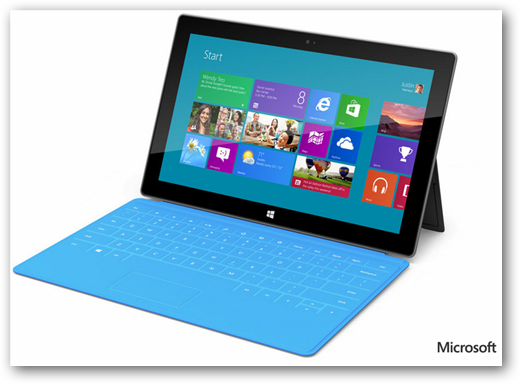
There was a lot of speculation about what Microsoft would announce on their June 18 mystery event. Some speculators dismissed the possibility that Microsoft would announce their own branded tablet as they ended up doing because of the belief that that Microsoft would not alienate their hardware partners. Yet, as Reuters reports, only a few big hardware partners were notified days before the event. And, some like Acer and Asus were left completely in the dark.
Microsoft kept PC partners in dark about Surface
Let’s take a look at a brief history of Microsoft and its touch screen mobile device hardware partners to understand why it doesn’t matter if the Microsoft Surface tablet alienate hardware partners.
The Microsoft Tablet PC (based on Windows XP) were announced in 2001 and became available in 2002. The devices were underpowered (slow), expensive, and heavy. Very few desktop applications were optimize for the stylus based system. The Tablet PC became a niche device used only in some vertical markets. And, those markets are being taken over by Apple’s iPad today.
The UMPC (Ultra-mobile PC) codenamed “Origami” was introduced in 2006. Bill Gates said that many of these devices would start at $499. And, the UMPC actually introduced some innovative features including a split onscreen keyboard that Apple emulated when it released iOS 5.0 for the iPad last year. Unfortunately, the devices were underpowered and expensive (2 to 3 times the $499 target). They were not, however, the heavy behemoths that Tablet PCs were and are. UMPC devices were made for several years. But, you’d be hard pressed to find one in use today. So, lets’ call the UMPC a failure.
The Netbook was actually quite popular in 2008 and 2009. However, its eventual failure can’t be blamed on the hardware partners. Microsoft forced vendors who licensed Microsoft Windows to limit the processor type, RAM size, and hard disk capacity. Microsoft torpedoed the Netbook all by themselves.
The Windows CE based Pocket PC, Windows Mobile, and Windows Phone devices are a totally different story. There was an explosion of creative device designs between 2001 and 2006. At one point, these devices with ever changing branding were the second most popular mobile platform behind RIM’s BlackBerry. However, the introduction of the iPhone in 2007 and Android in 2008 left these products in the dust. In 2010, Microsoft provided a limited reference design for Windows Phone makers which produced interesting but generally uninspired and unexciting phones that did not create the desired mindshare or marketshare. Microsoft and Nokia partnered in 2011 to product another round of uninspired and unexciting Windows Phone devices branded Lumia. By designating Nokia the favored phone maker, Microsoft gave the first clue that it was not afraid to alienate hardware partners.
I believe Microsoft will buy Nokia which has a relatively small market cap of just under $10 billion at this moment. Microsoft paid $6 billion for Aquantive (an online ad firm) and $8.5 billion for Skype. So, a $10 to $12 billion dollar purchase of Nokia would not be out of scope.
Tablet PC and UMPC hardware partners, in particular, failed to deliver affordable high quality products and failed to capture any significant marketshare. So, is it any surprise that after 10 years of failure Microsoft decided to do it itself? I don’t think so. What about you?